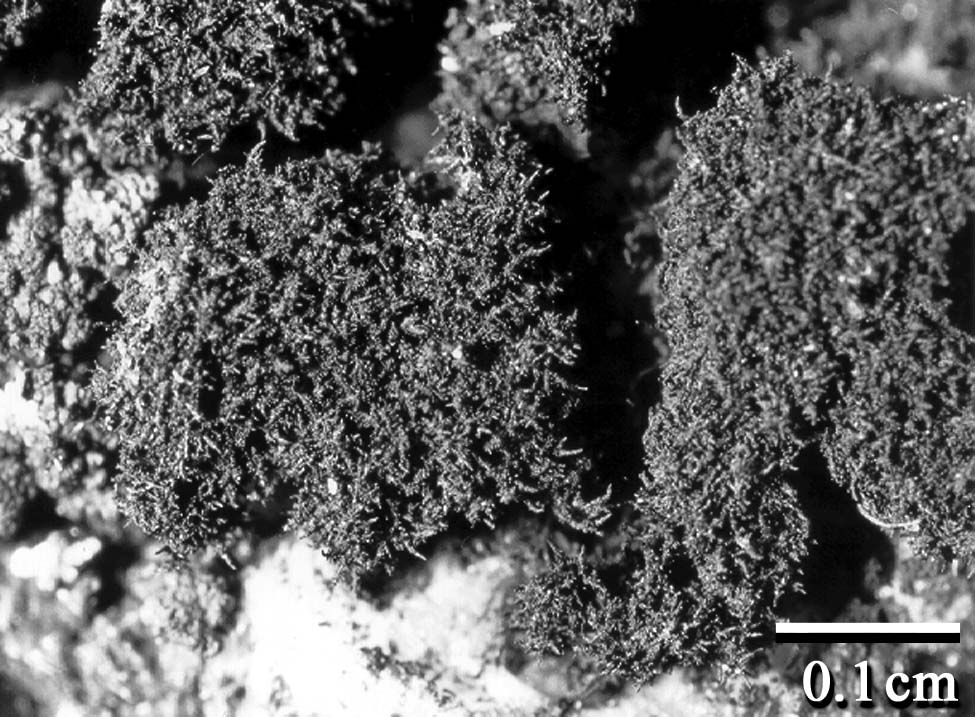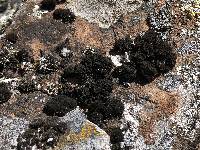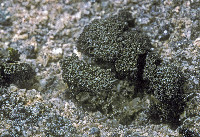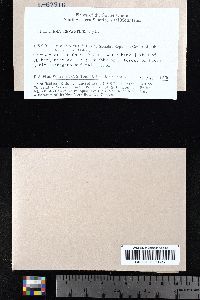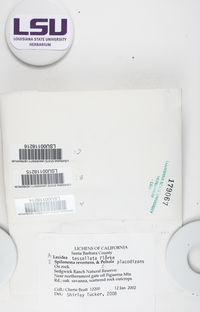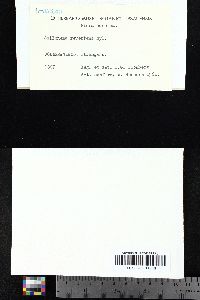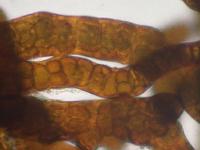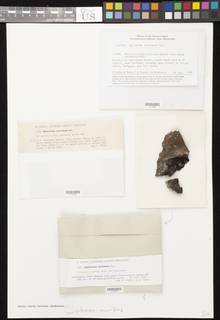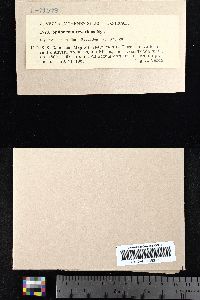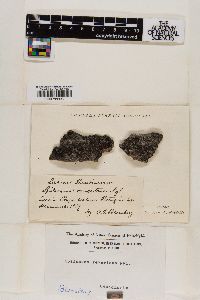
Consortium of Lichen Herbaria
- building a Global Consortium of Bryophytes and Lichens as keystones of cryptobiotic communities -
- Home
- Search
- Images
- Species Checklists
- US States: O-Z >
- US National Parks
- Central America
- South America
- US National Parks
- Southern Subpolar Region
|
|
|
|
Family: Coccocarpiaceae
[Spilonemopsis revertens (Nyl.) Vain.] |
Nash, T.H., Ryan, B.D., Gries, C., Bungartz, F., (eds.) 2002. Lichen Flora of the Greater Sonoran Desert Region. Vol 1. Life habit: lichenized Thallus: filamentous, subfruticose to dendroid, composed of tiny erect or rarely decumbent lobules which carry numerous, minute side branches, with roundish to angular, convex cushions, sometimes becoming areolate and then appearing crustose, attached to the substrate by a hypothallus composed of interwoven bluish-black hyphae, gelatinous when wet upper surface: dark olive to blackish, rough, sometimes granulose, rarely shiny, rough or granulose, rarely shiny anatomy: ecorticate, homoiomerous, a dense network of thick hyphae, in basal parts sometimes paraplectenchymatous photobionts: a filamentous cyanobacterium, Stigonema or Hyphomorpha, secondary photobiont absent lower surface: dark blue-green, brownish, dark purple to blackish due to the presence of colored hypothallus, rarely with pale rhizines Ascomata: apothecial, sessile, lecideine, lateral on the thallus lobules, usually hidden within the cushions, up to 0.5 mm wide; disc: black, convex from the beginning, thalline margin absent; exciple: violaceous, thin, becoming excluded, composed of radially orientated hyphae; epihymenium: brownish to dark violaceous; hymenium: greenish or partly violaceous, amyloid; paraphyses: robust, distinctly septate, sparingly branched, with pointed tips; hypothecium: violaceous asci: lecanoral, wall thick, with amyloid tip, 8-spored ascospores: at first simple, later septate, rarely mature, hyaline, ellipsoid, 7-9 (11) x 2.5-3.5 (-6) µm; wall: thin, hyaline Conidiomata: pycnidial, sessile, simple, globose, up to 0.2 mm wide conidia: small, bacilliform or ellipsoid, c. 2.5 x 1 µm Spot tests: all negative Secondary metabolites: none detected. Substrate and ecology: on siliceous rock, on sheltered, steep faces of boulders in damp places or along lake shores, often associated with Psorula rufonigra World distribution: cosmopolitan, mostly arctic to temperate regions of the Northern Hemisphere Sonoran distribution: Arizona, southern California, Baja California, Baja California Sur, Sonora and Chihuahua, mostly between 1000 and 2700 in montane areas. Notes: The species is distinguished from other cyanolichens by the tiny fruticose, ecorticate lobes and the presence of a bluish-black hypothallus. Spilonema paradoxum is very similar but the cushions are less tightly aggregated, the lobes are rarely erect and the apothecia and pycnidia are usually not hidden in the cushions. Spilonema revertens is the host of the parasitic lichen Psorula rufonigra.
Some species of Ephebe and Lichinella are similar, however, they never develop a dark hypothallus and always possess a thalline margin surrounding the apothecia. Thermutis lacks a thalline apothecial margin but the photobiont is a species of Scytonema whose filaments are surrounded by hyphae. Polychidium is also similar but is distinguished by its corticate lobes. |
|
|
|
Powered by Symbiota

